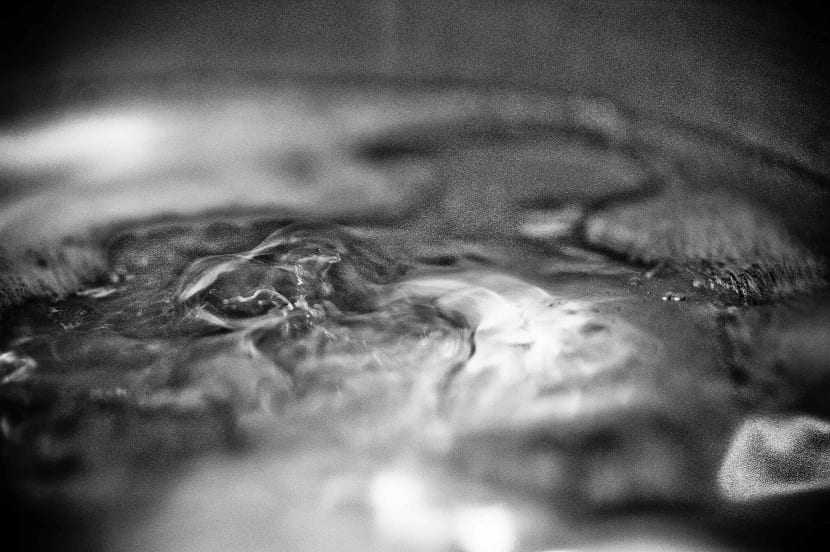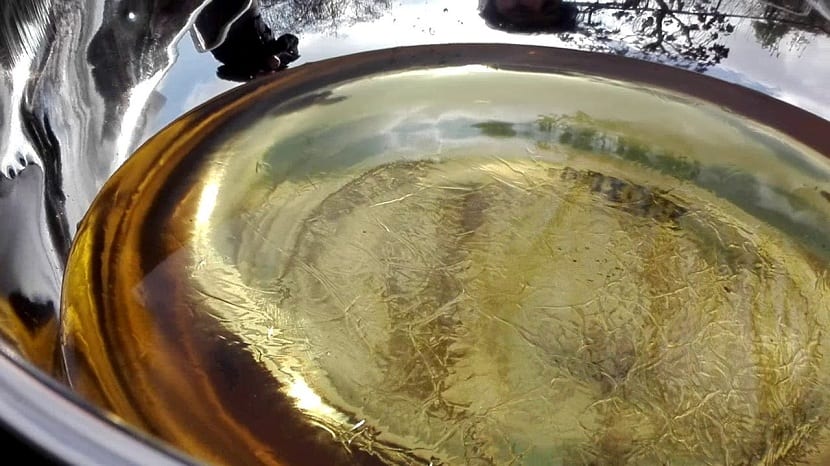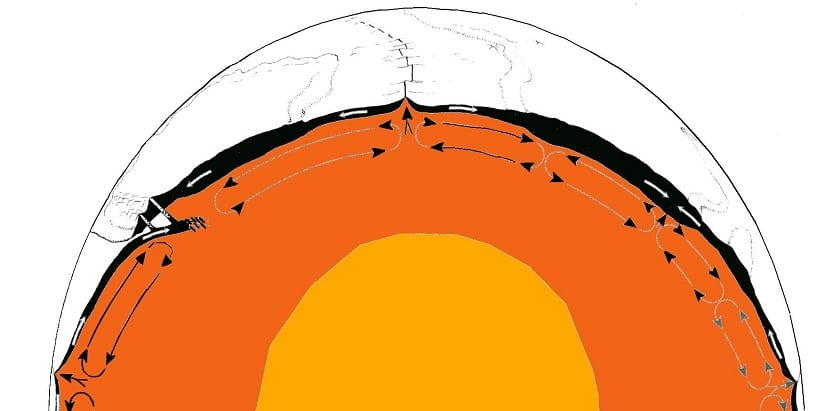
Surely you have heard about convection currents when we have talked about the different layers of the Earth. When we talk about convection currents inside the earth we are talking about the density differences of the materials that make up the earth's mantle. There are also convection currents as fluids that are moving because there are differences in temperature.
In this article we are going to tell you all about it.
What are convection currents

When we encounter fluids that are moving and moving because there is a difference in temperature or density we have convection currents. For this type of current to exist, there must be a fluid, either liquid or gas. This is because the particles within a solid are fixed and do not move, therefore, you cannot see a flow due to differences in both temperature and densities.
The difference between the temperatures of one area or another within the same material is what causes an energy transfer from a larger area to a smaller one. Convection takes place until there is complete equilibrium. When this process occurs due to heat transfer, currents of matter are formed that move from one place to another. Therefore, it is also considered a mass transfer process.
Convection currents occurring from naturally they are also called free convection. If, for example, this convection takes place inside an appliance such as a fan or a pump, it is called forced convection.
Why do convection currents form?

This type of phenomenon takes place due to a temperature difference that causes the particles to move creating a current. This current can also occur when there is a difference in density. Normally the flow goes in the direction from where there is higher temperature or density to where there is less temperature and density. These convection currents also take place in air. Atmospheric pressure flows blow in the direction from where there is more density to where there is less. In the case of storms, a low pressure zone will be the target of the wind direction.
This is what makes an area of low pressure can become a place where there are rainfall and even storms. When a current transfers heat from the high energy zone to the low energy zone, this convection occurs. In gases and in plasma sand and central temperature that also leads to regions of higher and lower density, where atoms and molecules move to fill the areas that are emptier. It can be said in a summarized way that hot fluids are rising while cold ones are sinking continuously.
This will happen naturally unless there is an energy source, such as sunlight or a heat source, that changes the direction of these currents. Convection currents take place until temperatures and densities are uniform. That the temperatures and the densities were completely uniform in the layers of the Earth is more complicated. This is due to the fact that the continental crust is in continuous creation and destruction, therefore, the sixth continuously incorporating materials of different temperature and density to the earth's mantle. Not to mention the temperatures inside the inner core.
The materials in the inner core of our planet are solid due to the strong pressure that exists in the center. The outer core, on the other hand, has fluid materials because, although the temperatures are very high, there is not such a powerful pressure.
Due to this continuous introduction of materials and a difference in temperature and density is so high, there are the so-called convection currents of the mantle and are the cause of the movement of the Tectonic plates.
Examples

In order to put some examples that make all this much clearer, we are going to describe the following: many scientists analyze the forces acting on a fluid in order to categorize them and understand convection. These forces can include gravity, surface tension, electromagnetic fields, vibrations, concentration differences, and the formation of bonds between molecules. These convection currents can be modeled and described using different scalar transport equations.
An example of a convection current can be that produced by boiling water in a pot. As soon as a few peas or a piece of paper are added to track the current flow, you can see how the heat source in the inner part of the hole heats the water and gives it energy, making the molecules move faster. . When the material is introduced at a low temperature it also affects the density of the water. As the water moves towards the surface it leaves some energy that escapes in the form of steam. Evaporation cools the surface sufficiently for some molecules to sink back to the bottom of the pot.
Another example of a convection current of hot air is the one that occurs in a house when air rises through the roof or attic of a house. This is because hot air is less dense than cold air so it tends to rise. As we have mentioned before, we can also see it with the wind. Sunlight and radiation heats the air in the atmosphere establishing a temperature difference that makes the air move. The steeper the temperature difference between one area and another, the greater the wind regime. This is because more air will move from the higher pressure zone to the lower pressure zone.
I hope that with these examples it has become much clearer what convection currents are.